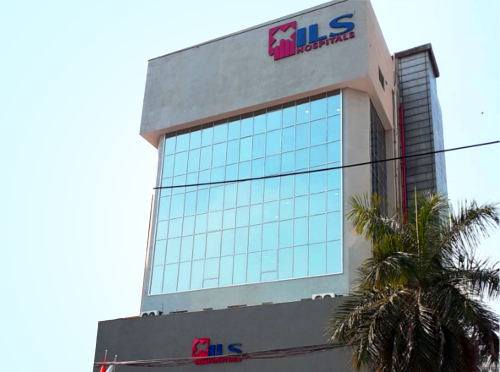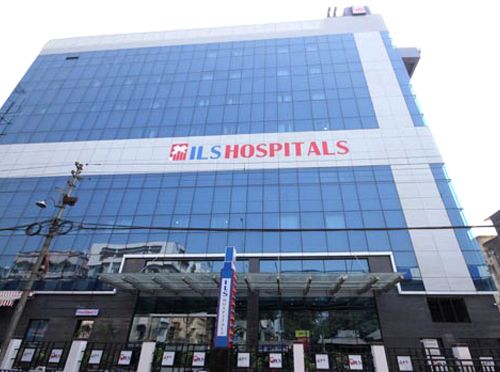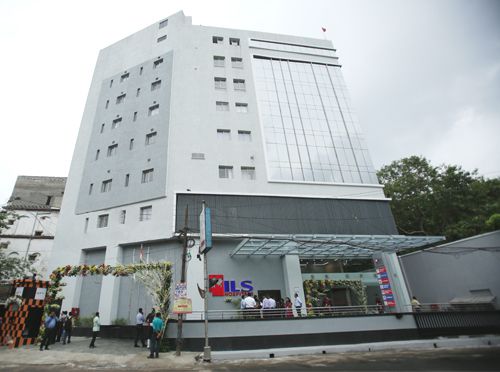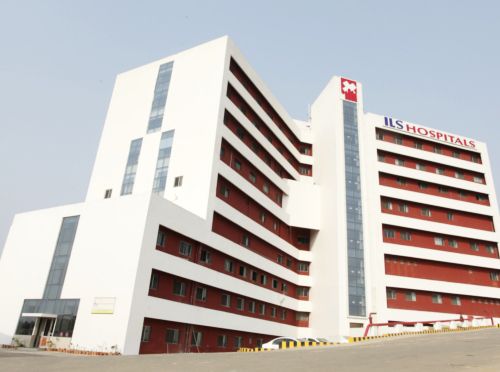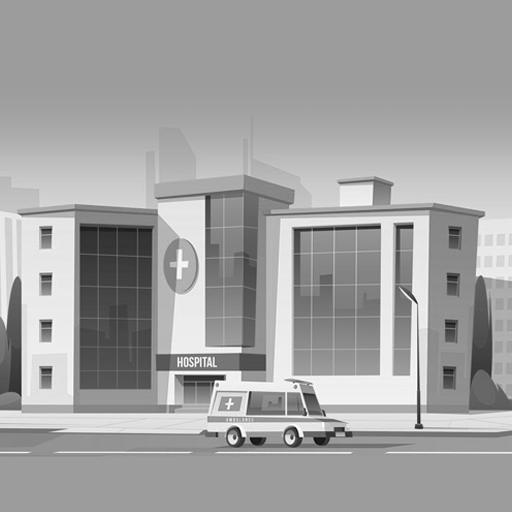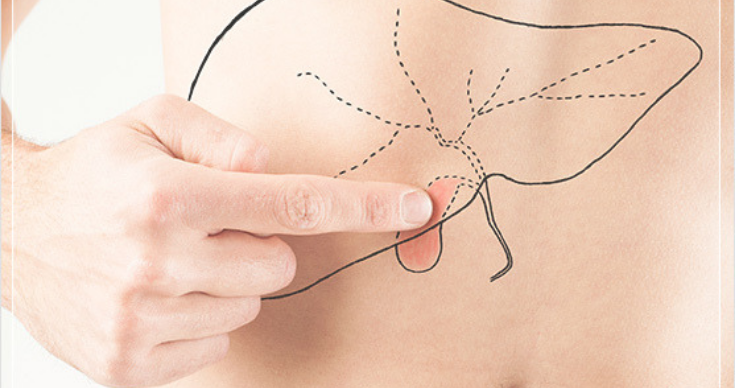6 Tips To Stay Healthy During This Season Change
The scorching summer is finally bidding goodbye now, as we are done with the fans and AC for some time now. We are welcoming the winters gradually with the warm and cozy winter wears. This seasonal change is beautiful and thrilling, but it also makes many of us queue in hospitals for various reasons. Relying on soups, herbal tea and over-the-counter drugs become inevitable for many of us, but following some tips can help you mitigate the ill-effects of seasonal shift effectively.
So, check out the following tips to stay healthy during this ongoing season change.
Keep Personal Hygiene In Check

Regardless of the season, hygiene always acts as the first line of defense for many contiguous and pathogenic conditions. Doing simple, yet crucial hygienic practices such as washing hands properly, taking regular showers, using a handkerchief while coughing and sneezing and ensuring sanitation hygiene itself can keep several complications at bay.
Stay Hydrated

The fluid and ion balance is a crucial factor for a healthy body. Even though drinking water seems a little challenging during winters, staying hydrated is crucial. Try to have adequate water each day and also try to have other beverages such as tea, soups, and broths to meet the requirements.
Catch Up With Your Zzzs

Sleeping for 7-9 hours is crucial, during every season. Sleep deprivation can not only make you feel lethargic and weak but also slows down your immunization. Thankfully, sleeping adequately during winters is not difficult, is it!
Breathe The Nature

The changing weather should not restrict your movement in the outdoors. In fact, try to blend with the changing nature. Not only it will boost your immunity, detoxify your body but also uplift your mood in several ways.
Eat Seasonal Fruits And Veggies

Every season brings some challenges, but nature also brings several delicious and nutritious fruits and veggies with every season. They are all enriched with crucial nutrients to help you have a better health.
Stay Dressed Accordingly

Of course, enjoying the winters is crucial, but so is suitably getting dressed. Consider carrying winter wear to your office or school, which you can drape while returning to your homes, as the temperature drops significantly during nightfall.
As you can see, staying in good health is quite effective if you follow these simple, yet helpful tips for the season. However, in case you fall into the traps of illness, don’t hesitate to seek medical consultation at the earliest to make a speedy recovery. You can always visit ILS Hospitals for any such conditions.
Asthma – All You Need To Know About
‘Breathe In, Breathe Out’. This is a common tip we offer to one another every now and then, to cope up with our stressful lives. However, did you ever wonder that how much our lungs are working 24/7 to keep providing this air supply? Lungs have alveoli, which are expanding and contracting to facilitate the exchange of carbon dioxide and oxygen. However, many a time, due to some malfunctions, the lungs cannot perform well and as a result several respiratory conditions onset.
What Is Asthma?
Asthma is one very common inflammatory type respiratory illness that is caused by the obstruction of the airway, which eventually leads to mild to severe breathing difficulties. Let’s understand all about asthma in details.
How Lungs Work?
Lungs are a set of organs that facilitate the exchange of carbon dioxide and oxygen for the body. The windpipe progressively branches into smaller tubes and buds throughout the lungs, like a channel. As we breathe in, we inhale air through the nose and it travels all the way into the lungs, where it diffuses into the bloodstream. Simultaneously, it absorbs carbon dioxide and expels it from the body through the same passage.
How Asthma Occurs?
Asthma onsets when this passage gets blocked and it reduces the amount of air passing through the windpipe. It happens due to the swelling of the lungs mucus lining, which in turn, results in tightening of the muscles around it. Its degree of severity varies from people to people. For some people, it is managed effectively with minor medication, while for others, it poses severe threats in the form of asthma attacks. Moreover, the repetitive occurrence of the same causes a nuisance by interfering daily-life activities.
What Are The Symptoms Of Asthma?
Asthma can often be characterized by chest congestion, chest pain, breathlessness, whistling or wheezing while breathing, trouble sleeping due to the high severity of the other symptoms. Often the symptoms heighten up even more with cold and flu. For some patients, the symptoms trigger with a certain condition like exercise or exposure to a certain type of chemicals or so.
Treatment Of Asthma
Most asthma cases can be effectively managed with timely, medical measures. Often it requires either or both, rescue inhalers (to treat symptoms) and prevent inhalers (to prevent the symptoms). In severe cases of asthma attacks, using asthma shots might be inevitable as well.
Read more – Early symptoms of Lung Cancer
ILS Hospitals offer quality treatment for asthma along with the best care for a wide range of other respiratory and chest conditions.
Busting 6 Myths About – Knee Replacement Surgery
Knee replacement surgery is the most common joint replacement surgery that is executed in the leading Orthopaedic clinics. Sadly, several misconceptions and myths surround the same. It’s time to burst 6 most common myths that surround knee replacement surgery.

Fact – The success rate of both partial knee replacement surgery and total knee replacement surgery are exceptionally high. In fact, availing it from experienced doctors, through the advanced medical approach, and at a decent Orthopaedic clinic, has as high as a 95% success rate.

Fact – One can drive with much ease and comfort, within 6-8 weeks after the laparoscopic knee replacement surgery.

Fact – It is a common and frightening misconception. Having natural movements like bending knees, or sitting on the floor can be done, with proper guidance post recovery and rehabilitation. It greatly depends upon the quality of surgery and implant.
Read more – Which Orthopaedic Joint Replacement should you consider for yourself.

Fact – This happens in very rare cases when pain and discomfort arises. Usually, such cases happen, if an inexperienced doctor makes any error while implanting, but the same can be corrected accurately. Many eminent Orthopaedic clinics perform revision surgeries on outpatients, on a regular basis.

Fact – Well, often people prefer to have these replacement surgeries done for one knee at a time, mainly due to financial constraints. However, from a medical perspective, getting them both done together is not only safe but has its perks too. Just undergo the surgery in one go and no need to pause for a double recovery period either.

Fact – It greatly depends on the quality and type of surgery. While open surgery takes about a couple of months to make a complete recovery, the advanced laparoscopic surgery enables the patient to resume most of their daily work within a couple of weeks.
In a nutshell, Knee Replacement Surgery is an extremely safe and effective surgery. For most of the patients, it is a procedure that gives them a second chance to make the best out of life.
Facts About C-Section Every Expecting Mother Should Know Of
Bringing a life to the world is both amazing and challenging. A successful term of pregnancy ends up with a successful birth, which occurs either naturally or surgically. Most maternity hospitals nowadays assist in both natural and caesarean birth. Earlier the number of caesarean birth (also known as C-section) was very limited, but nowadays more and more cases are being noted. This advanced procedure helps many complicated births, but several myths surround it that makes many pregnant women avoid it on purpose.
Let’s burst 5 common myths regarding the same.
Myth 1 – It is Risky
Fact – Like any surgical procedure, it has certain risks attached to it. But so is with natural birth, where the use of forceps can cause injury to both mother and child. It is safe to conclude that a C-section from the hands of experts is possessed no long-term threats whatsoever. In fact, in many cases, it is a lot safer than natural birth.
Myth 2 – It is Always An Emergency Procedure
Fact – Many C-sections are indeed done on an emergency procedure. But, it can be elective as well. Maternity hospitals are observing that many women these days actually prefer the C-section due to its benefits.
Myth 3 – It is Only For High-Risk Pregnancies
Fact – Most high-risk pregnancies and breech babies are advised for C-section to mitigate risks associated with natural birth. But there is no thumb rule for it. Any women can choose to have her baby through this procedure if she feels it is the right one for her.
Myth 4 – It is Impossible To Deliver Naturally After A C-Section
Fact – Earlier, it was quite a changeling and considered so. These days, it is not only possible but actually is practiced by many women. It is more professional called VBAC (Vaginal Birth after Caesarean).
Myth 5 – C-Section Makes a Less of a Mother
Fact – No. Absolutely not. No matter how a baby is born, a mother is a mother. She is every bit of strong and commendable.
So, don’t let the silly myths stop you from considering the C-section for your baby if you feel it is the better option out of the 2.
Always remember the quote, by Laura Stavoe Harm: “There is a secret in our culture and it is not that birth is painful but that women are strong”.
All About X-Ray Tests And Its Scope
Diagnosis plays a crucial role in the overall treatment and care. In fact, it is not uncommon to find long queues in the good diagnostic center just like you find in the best hospitals. To make things easier for our patients, we at ILS Hospitals, offer most advanced high-end diagnoses including Cath lab, MRI, ECG, CT scans and more, within our premises itself. Today we will discuss a special diagnosis test, namely the X-ray as we are observing the World Radiation day, on 8th November.
What is x-ray?
The credit goes to the German Physics professor Wilhelm Rontgen, who accidentally discovered it while some experiment. X-ray screening is one of the oldest diagnostic techniques in the medical realm. It uses shielded, controlled ionized radiation to pass through the human body and it produces images accordingly. Any deformity and damage can be clearly evaluated from the same.
Scope of x-rays
X-Ray tests have huge scope in various medical specialties. We list out few most common –
1. Orthopaedics
a) The most common use of x-ray is the diagnosis of orthopaedic deformities. It is used to identify the damages to bones and joints.
b) It also can be used to estimate the bone density and thus is quite helpful to diagnose medical conditions like osteoporosis and arthritis.
c) It can also detect the presence of the bone tumors. However, its nature has to be determined by further screenings.
2. Dental
a) It can be used to check the alignment and damage of teeth and jaws. It can also be used to check for the cavities in the mouth.
3. Thoracic and abdomen cavity
a) Several lung conditions can be detected by x-ray tests, namely tuberculosis, cystic fibrosis and sometimes even cancer.
b) It can also detect several conditions, namely blocked blood vessels.
c) It is a useful tool to detect the presence of stones in the abdominal organs.
d) It is highly useful to trace any swallowed item, particularly in the case of children.
Though the number of diagnostic center offering X-ray screening is mushrooming in every corner, not every unit is using them as per the standard guidelines. As a result, many a time, people suffer hair loss, burns, and other complications due to poorly shield x-ray radiation. At ILS Hospitals, we ensure the x-ray tests offer only the positive benefits to the patients. We will be back soon with one such special diagnosis technique and its scope.
Most Common Health Complications of Newborns
‘A newborn – a new beginning of life, a new hope, a new possibility’
If you are a new parent, you too can clearly relate to the same. However, having a child brings several concerns along with it. It is highly likely that you are constantly worried about the health and wellbeing of your little one. If you do, you are not alone and as per obstetricians, your worries are not pointless either. Newborns and infants are most susceptible to various illnesses from right after birth and until they turn at least a year old. You can find several infants being treated in hospitals on a daily basis. Here we present, a few most common health problems of newborns and infants-
Read more – Must-Have Immunization For Your Kids
1. Birth Injuries
It is the most common type of trauma seen in newborns and often occurs due to the use of forceps during childbirth. It is more common among breech babies and the ones with difficult labor. Most of the birth injuries resolve with time, however, in a few cases the degree of damage is more severe such as fracture and needs immediate care.
2. Diarrhea
Having loose motion is quite normal for young infants. It is often due to the reaction of antibiotics and infections. It is recommended to keep the baby hydrated and if the color and texture of the stool change rapidly, it is wise to seek an opinion from an expert.
3. Vomiting
Just like the loose motion, vomiting is quite common among newborns as well. It is particularly prevalent after feeding. Thereby, parents and other caregivers are encouraged to burp the child after feeding them. Persistent vomiting leads to severe dehydration and thus proper care is advised. Moreover, throwing greenish vomit is a red flag and requires immediate medical attention.
4. Fever
Infections are quite common among infants due to a low immune system. Thereby, having a fever too is common, as fever is the body’s autoimmune response to fight the infections. But parents are advised to seek help, if fever higher than 101 degrees persists for long, as it may lead to severe complications in the future.
5. Skin Problems
The baby has very soft and delicate skin during infancy and they suffer very frequent diaper rashes. It can lead to itching, irritation and other dermatology issues. It is therefore advised to use a good diaper cream and change the diapers more frequently.
We are observing newborn care week from 15thto 22nd November. And thereby encourage every new parent to take adequate measure towards ensuring that their child has a healthy childhood and life ahead. We, at ILS Hospitals, have expert neonatologists and pediatricians to deal with any kind of infant medical condition. Also, we are all equipped with the Neonatal intensive care unit.
Rely on the quality treatment and care of ILS Hospitals to treat any illness or injury of your newborn.
Invasive, Non-Invasive and Interventional Cardiology – How Are They Different?
The heart is one of the most crucial organs of our body. Its function is vital for our functionality and survival. The count of heart diseases is increasing at a steady rate. While some conditions like palpitation can be addressed with oral medication, some conditions like heart attack qualify as a cardiac emergency. Cardiology is the special branch of medicine that deals with diagnosis, treatment, and care for heart ailments.
Today, we will brief 3 major branches of cardiology, namely- invasive, non-invasive and interventional cardiology. All three of them have the ultimate same goal- evaluate the heart’s structure and functions and diagnose a heart condition when encountered.
1. Invasive Cardiology
As the terminology clearly indicates, this branch deals with invasive approaches. It involves either open or laparoscopic incisional probes to trace the abnormalities of the heart. Two of the most common procedures are angioplasty and stenting. It aims to clear the blocked blood vessels through a surgical approach.
2. Non-Invasive Cardiology
Unlike the previous one, non-invasive cardiology carries out diagnosis and treatment without inserting any equipment inside the body. It includes procedures such as Holter monitor, ECG, Echocardiogram, MRI, CT scan etc. It uses imaging techniques to extract crucial information about the heart.
3. Interventional Cardiology
It involves an advanced technique to address cardiac issues. It is an advanced branch of cardiology and needs expert medical team along with advanced, high – end equipment and technology. It mostly uses a small tube-like catheter to rectify narrowed, blocked and damaged blood vessels. It includes procedures like Valvuloplasty, Percutaneous valve repair, Percutaneous coronary intervention (CPI), congenital heart defect correction etc.
Underlying, untreated or misdiagnosed medical conditions can actually end up the surface as a cardiac emergency unannounced. Thus, it is natural for a patient to wonder which cardiology procedure is ideal for them. However, it is not a matter of choice of the patient and can only be evaluated by an expert cardiologist. Thereby, it is not uncommon to find a patient simply complaining about a ‘racing heart’ might actually be referred to a specialist after the primary screening.
Most of the cardiological conditions are well addressed at ILS Hospitals. However, our expertise Interventional cardiology is unparallel. We address coronary artery diseases along with congenital heart diseases, heart valve diseases, and peripheral vascular diseases. For any cardiac check-up or emergency, contact us at https://bit.ly/2DvtWAg
Watch Out For These 5 Health Hazards During Diwali
It is the time of the year when we all have the best excuse to have as many sweets we want because it is the festive season of Diwali. This festival brings joys and celebration, but sadly, it often brings several unwanted medical complications as well. Watch out for these health hazards that might come uninvited during this time.
1. Burn Injuries
The festival of lights is celebrated with candles, diyas, and firecrackers by the enthusiasts all over India. Moreover, cooking for hours and roaming around ritual fires also increase the chances of fire-related accidents. Needless to say, burn injuries are the most common accident that occurs during Diwali. Unless it is a minor, first-degree burn, it is always recommended to get it treated under a medical specialist.
Read more – A Guide To Types Of Burn And Its Treatment Approach
2. Blood Sugar Fluctuation
As Diwali involves binge eating on delicious treats and sweets, keeping blood sugar in check is quite challenging. In fact, many people hanging in the pre-diabetes zone become susceptible to diabetes during Diwali and seek diabetes treatment afterward. Though it is not exactly a medical emergency, it is crucial to keep count of the sugar intake as diabetes is tricky to resolve after it onsets.
3. Respiratory Discomfort
The level of air pollution increases profoundly due to fireworks during this period of time. This leads to severe respiratory discomfort, especially for children, expecting mothers and older people. People with any respiratory discomfort are particularly advised to practice caution against possible exposure to dense smoke and polluted air.
4. Ear Injury or Hearing Trauma
Firecrackers also produce an abundant amount of loud noise of high decibel. Often it gets corrected on its own, but exposure to the same from a close range can cause some severe damage such as temporary or permanent deafness. Just like the previous safe measure, ENT specialists advise people with a sensitive ear to practice caution to mitigate any severe injury or complications.
5. Cardiac Ailments
The eruption of sudden loud noise due to crackers causes alarm and uneasiness in people, especially, those who suffer from hypertension and other underlying cardiac discomforts. It also might induce sleep disturbance, restlessness, fidgetiness and impulsive behaviors among more susceptible people.
So, keep a note to avoid these health hazards amidst of enthusiast Diwali celebration. Always have a first aid kit within reach, but seek medical help, to rule out the chances of long-term consequences. Happy Diwali!
ILS Hospitals is open 24*7 even during this Diwali to offer you complete medical assistance if needed.
Bursting 5 Myths About Stroke Everyone Should Know About
Stroke is one of the leading causes of death all over the world. Stroke is a medical emergency that requires immediate medical attention. If that is availed on time, stoke can be managed effectively. However, many individuals fail to recognize its symptoms on time and as a result, precious moments go by. Today, we will segregate 5 most common myths from the facts. So, let’s check them all, one by one.
Myth – Stroke and heart attack are the same thing
Fact- This is the most common myth about the stroke and heart attack. They both are a medical emergency and caused by a blocked blood vessel, but their locations are completely different. The stroke happens in the brain, while the heart attack occurs in the heart, as the name clearly indicates.
Read more – The Difference between Heart Attack and Stroke
Myth – It is challenging to recognize a stroke
Fact- Thankfully, it is a myth. Stroke gives several prior indications for about 85 % of the time.
The acronym FAST should be followed. It stands for Face, Arm, Speech and Time. It is noted for facial drooping, weakening of arms/legs and speech difficulty in the suspected person and the time to call emergency service and reach qualified health provider.
Myth – Stroke is a disease for older people
Fact- The older people, more than 65 years, are clearly at a higher risk of the same. However, that does not mean younger people are protected from it. In fact, many younger people are being diagnosed with stroke these days from excessive built up stress, over a prolonged period of time. This myth makes many young people ignore the signs of the same and needless to say, it results in catastrophic consequences.
Myth – You can manage a stroke on your own
Fact- Absolutely not! Many times, the primary symptoms of a stroke go away after a while, making people believe it is resolved. However, it is just a warning sign and most likely to relapse shortly. Always remember stroke is a medical emergency that requires immediate treatment from an experienced medical team. It cannot be managed with anything else.
Myth – Strokes cannot be prevented
Fact- Thankfully, it is not factually correct. The adequate measure can keep a stroke at bay. This includes managing stress, following a healthy diet, keeping blood pressure, cholesterol, diabetes, etc. in check, and seeking medical help for any related discomfort on time.
Stay aware of the warning signs of an imminent stroke and reach your nearest quality caregiver. At ILS Hospitals, we provide 24*7 critical care for every medical emergency, including stroke. Take down the emergency helpline for the hour of need,
EMERGENCY HELPLINE
Agartala: 8974050300, 0381-2415000
Dumdum: 033-40315000
Salt Lake: 033-40206500
Do You Need A Gallbladder Surgery To Cure Your Gallstones?
Your occasional stomach pain and digestion troubles not resolving even with home remedies and over-the-counter medicines? Are you certain it is not your gallstones? Knowing the symptoms of the gallstones help with an early detection and thereby a timely treatment. Few patients do not even realize the presence of the gallstones unless they block the path of bile, triggering ‘gallstone attack’ and cause unbearable, sharp pain. To avoid any such trauma and complications, it is advised to undergo timely, elective gallbladder surgery, also known as a cholecystectomy.
8 out of 10 patients with underlying gallstones need to undergo cholecystectomy either as an elective or emergency procedure. Those who might never need any surgical cure have what is called the ‘silent gallstones’ and can manage it and have a normal life with mild medication and lifestyle change. However, those who are experiencing any symptoms of the same, are always advised to avail the surgery.
The gallstone surgery can be done either by open or by laparoscopic surgery technique. The procedure is finalized by having multiple diagnostic screenings. These include blood tests, MRI (HIDA), ultrasound scan and endoscopy. After this thorough evaluation, the doctor finalizes the surgery mode. Here we present a brief description of them both. In both the procedures, often the gallbladder is removed altogether to mitigate the possibilities of its recurrence of the gallstones in the future.
Open surgery – The surgery is carried out through 5-8 inch incision made near the site. After the procedure, the incision is again stitched up. Now, it is suggested only for those who have some severe gallbladder complication or are in their 3rd-trimester pregnancy.
Laparoscopic surgery – It is also known as minimally invasive surgery or keyhole surgery and is carried out through 4-5 minute incisions and with the help of the modern instruments. These include laparoscope, camera, cold light source, and many other assisting instruments. A well-experienced surgeon operates effectively with the assistance of this advanced surgery and offers multiple benefits to the patients. These include much lesser operative and postoperative infection, bleeding, pain and recovery time.
ILS Hospitals, being a pioneer of laparoscopic surgery in eastern India, offers this advanced surgical technique for the people suffering from gallstones. However, open gallbladder surgery is also offered for patients with complications. In case, you or any of your loved ones is suffering the pain of the same, come down to ILS Hospitals to resolve it for once and all.


